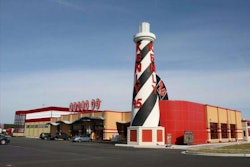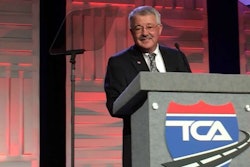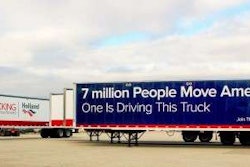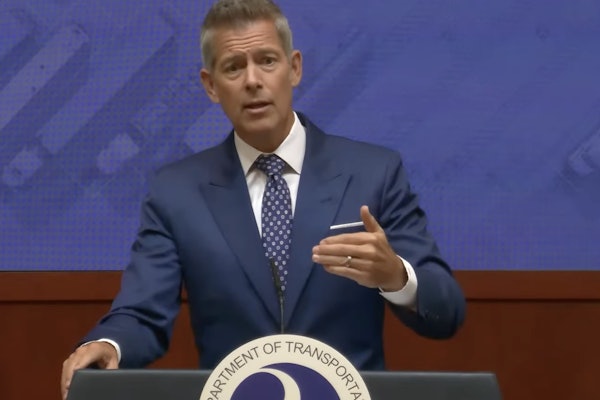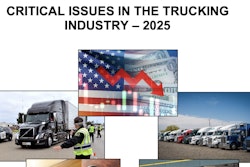Simply adding more parking spaces, even along busy freight corridors, likely wouldn’t fix the country’s widespread truck parking shortage, said four panelists at a seminar held last week at the Mid-America Trucking Show.
The panel consisted of representatives from the U.S. DOT, the enforcement community and owner-operator and large fleet interest groups. They spoke for an hour Thursday at MATS about potential fixes for the industry’s parking crisis, the main consensus being: There’s no simple answer.
Panelists included:
- Scott Grenerth, head of regulatory affairs for the Owner-Operator Independent Drivers Association
- Darrin Roth, VP of highway policy for the American Trucking Associations
- Tom Kearney, emergency transportation and freight corridor manager for the DOT’s Federal Highway Administration
- Will Schaefer, director of vehicle programs for the Commercial Vehicle Safety Alliance.
The panel was moderated by Tom Phelan of research group VHB.
Grenerth early in the panel discussion established one of the key Catch 22s for truck operators today: Remaining compliant with federal safety rules while also finding a safe, secure place to park during off-duty rest periods.
“Spaces obviously are good and are needed,” Grenerth said in response to a question by Phelan, who asked if simply having more spaces would solve the truck parking problem. “But it’s going to take more than just spaces. We need them in the right places, and they need to be accessible and safe.”
FHWA’s Kearney said the federal budget for truck parking is “not sufficient,” saying competition among federal agencies for funds have set back efforts to pay for research and parking projects nationwide.
Likewise, he said, his agency sees major shifts in the U.S. supply chain and freight movement coming, spurred by the looming opening of the Panama Canal expansion. The potentially major changes in freight flow, he said, give the agency pause in acting too quickly.
“What does U.S. transportation look like in the U.S. [in 10 years]? Not a person has a clue. That’s how dynamic of a problem this is,” he said. “So how do we use public money effectively and efficiently? How does private sector money get put in the right area?”
Also, land use control dictated by local governments often times ices out land that could be used for either public or private parking areas, Kearney said.
Panelists near the end of the one-hour seminar were asked if they had an unlimited budget — “all the money in the world,” as moderator Phelan put it — to attempt to solve the country’s parking shortage, what would they do?
Panelists seemingly agreed: The issue isn’t entirely funding, but strategy, too.
“We need to build more capacity where it’s needed,” said ATA’s Roth.
Schaeffer, meanwhile, said an expansion of signage and on-highway parking information would help truckers find spaces and help enforcers share information with each other and truck operators about space availability. He also cited a recent initiative in his home state of Wisconsin, in which the state’s DOT tacks on to weigh station construction contracts room for a small truck parking lot. “They put in a bathroom and a flat piece of concrete,” he said. “It’s not the most elaborate [facility], but it’s a small success story.”
Grenerth said “all the money in the world” doesn’t solve some trucking parking barriers, such as land use disputes. He did offer two ideas, however, to put already existing facilities to use:
(1) Incentivizing shippers and receivers to allow truckers to use their facilities to park by offering them tax breaks
(2) Turning shutdown factories and warehouses into very basic truck stops.





